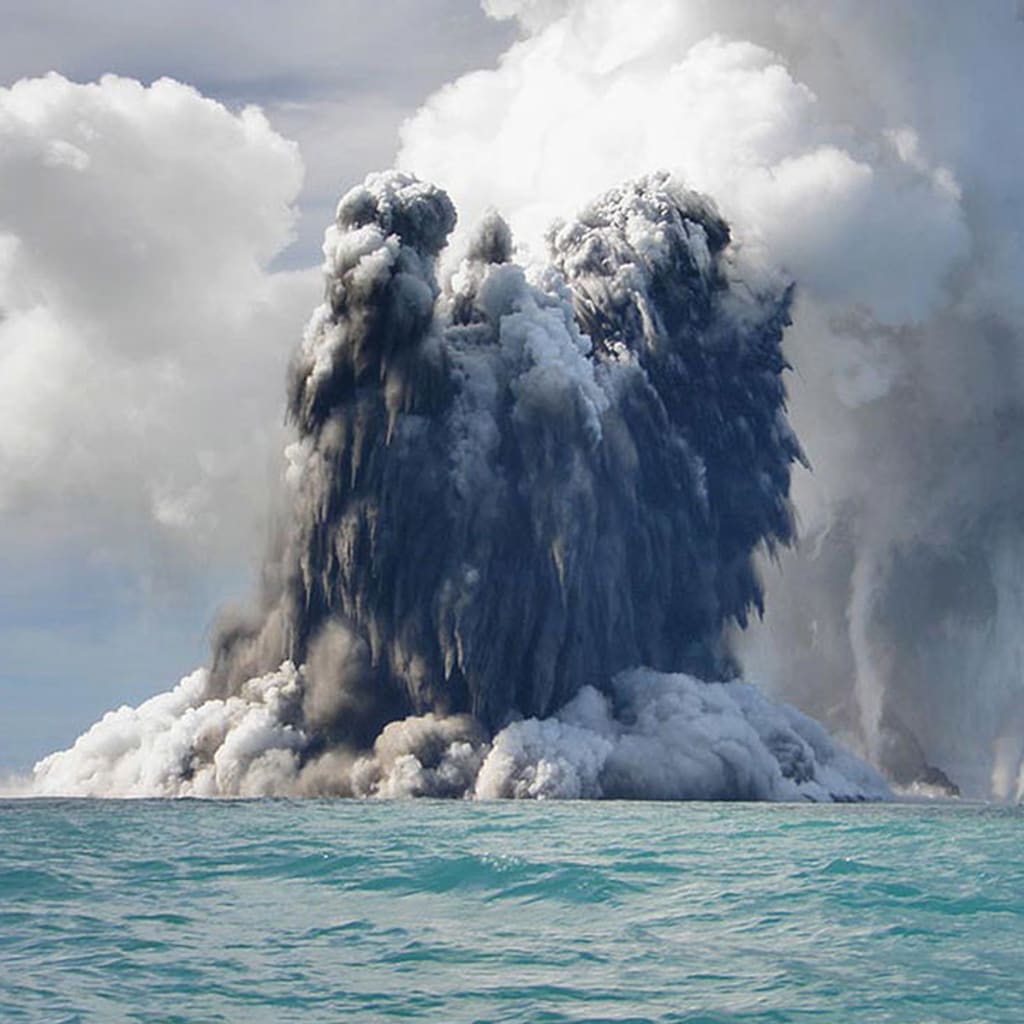What if all under volcanoes exploded at once
The sudden and simultaneous eruption of all underwater volcanoes would trigger intense seismic activity in the oceanic crust, potentially leading to the generation of powerful tsunamis. These massive waves can travel across vast distances, causing widespread destruction along coastal regions.

A volcano is a geological formation that occurs when molten rock, ash, and gases escape from beneath the Earth's surface. It is a vent or fissure in the Earth's crust through which these materials are expelled. Volcanoes can be found on land, under the ocean, and even on other planets.
Volcanoes are usually formed at tectonic plate boundaries, where the Earth's crust is divided into several large pieces that are constantly moving. The majority of volcanoes are located along the Pacific Ring of Fire, which is a region encircling the Pacific Ocean known for its high volcanic and seismic activity.
When the molten rock, known as magma, rises to the surface, it is called lava. Lava can flow out gently or explode forcefully, depending on its composition and the conditions within the volcano. Volcanic eruptions can release ash, gases, and pyroclastic materials, which are fragments of rock and volcanic debris.
Underwater volcanoes, also known as submarine volcanoes, are awe-inspiring natural wonders that dot the world's oceans. These volcanic structures, found along tectonic plate boundaries, release vast amounts of heat, magma, and gases into the water. While individual eruptions can have a significant impact on marine ecosystems, the hypothetical scenario of all underwater volcanoes exploding simultaneously raises concerns about the potential catastrophic consequences. Let's explore the potential aftermath of such an event.
1. Massive Release of Heat and Gases:
If all underwater volcanoes were to explode at once, an enormous amount of heat and gases would be released into the ocean. This sudden influx of heat could cause a significant rise in water temperatures, leading to widespread coral bleaching and potentially devastating marine life. The release of gases, including sulfur dioxide and carbon dioxide, could also have detrimental effects on marine ecosystems, affecting fish populations and disrupting the delicate balance of the underwater food chain.
2. Tsunamis and Seismic Activity:
The sudden and simultaneous eruption of all underwater volcanoes would trigger intense seismic activity in the oceanic crust, potentially leading to the generation of powerful tsunamis. These massive waves can travel across vast distances, causing widespread destruction along coastal regions. The impact on human settlements, infrastructure, and coastal ecosystems would be devastating, resulting in loss of life and significant economic damage.
3. Altered Oceanic Chemistry:
The release of volcanic gases, particularly carbon dioxide, could significantly alter the chemistry of the ocean. Increased carbon dioxide levels would lead to ocean acidification, affecting the growth and survival of many marine organisms such as corals, shellfish, and plankton. This, in turn, would have cascading effects on the entire marine ecosystem, including fish populations and the livelihoods of those dependent on the oceans for sustenance.
4. Disruption of Climate Patterns:
The release of massive amounts of heat and gases into the atmosphere from underwater volcanic eruptions could disrupt global climate patterns. Volcanic aerosols, consisting of fine ash and sulfur compounds, can reach the upper atmosphere and reflect sunlight, leading to a temporary cooling effect on the Earth's surface. However, the long-term impact on weather patterns, ocean currents, and climate stability remains uncertain and would require further scientific investigation.
5. Potential for New Habitats:
While the immediate consequences of all underwater volcanoes erupting simultaneously appear catastrophic, in the long term, these volcanic eruptions could create new habitats. As the volcanic material settles on the ocean floor, it can form nutrient-rich sediments, attracting marine life and kick-starting the colonization of new ecosystems. Over time, these areas could potentially become biodiversity hotspots, fostering the development of unique and diverse underwater communities.
Conclusion:
The hypothetical scenario of all underwater volcanoes erupting simultaneously would undoubtedly have catastrophic consequences for marine ecosystems, coastal communities, and global climate patterns. The release of heat, gases, and the generation of tsunamis would lead to widespread devastation. However, it is important to note that the long-term effects might also bring about new and unique habitats. While this scenario is highly unlikely, it highlights the need for continued research, monitoring, and understanding of underwater volcanic activity to safeguard our oceans and coastal areas.
About the Creator
Micheal
c






Comments
There are no comments for this story
Be the first to respond and start the conversation.